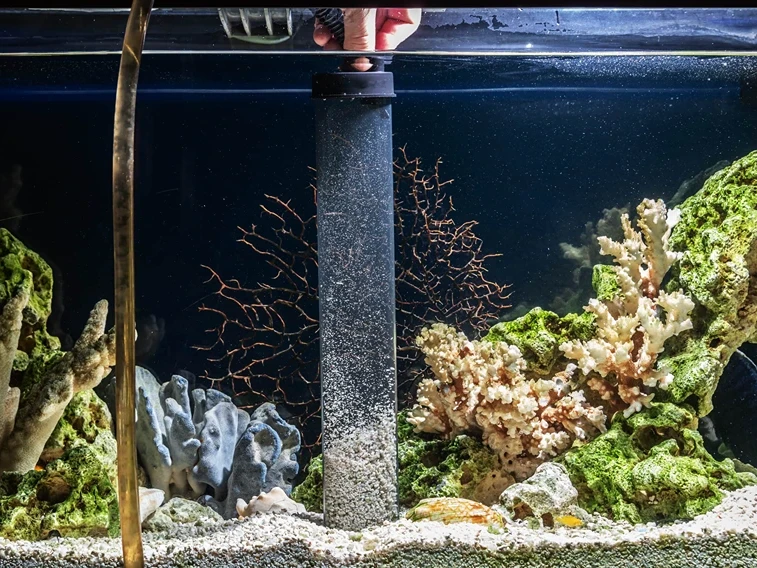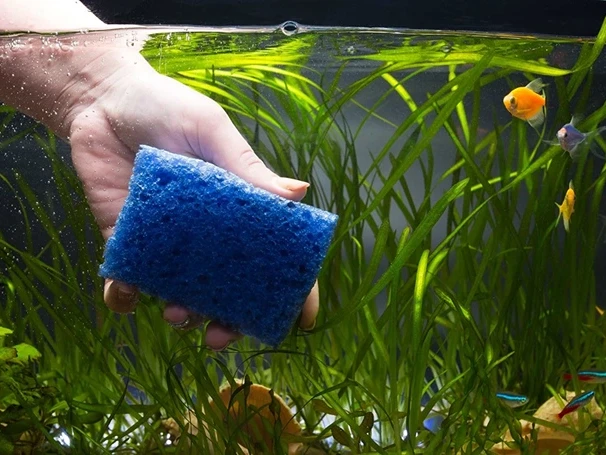Aquascaping, the art of creating intricate underwater landscapes, has evolved from a simple hobby to a sophisticated form of expression within the aquarium hobby. Advanced aquascaping goes beyond the basics, incorporating meticulous design, detailed planning, and an understanding of aquatic ecosystems to create stunning visuals that captivate and inspire.
Jump to:
Key Takeaways
- Understanding Advanced Aquascaping: A blend of art and science, advanced aquascaping transforms aquariums into living pieces of art.
- Essential Elements: Incorporates aquatic plants, substrates, hardscape materials, and advanced lighting and CO2 systems.
- Advanced Techniques and Styles: Explores various aquascaping styles such as Iwagumi, Dutch, and Nature Aquariums for diverse visual appeal.
Register for our latest in-depth reviews and product round-ups from the experts
Enter your email address below to receive our twice monthly reviews emails.
By entering your details, you are agreeing to our terms and conditions and privacy policy. You can unsubscribe at any time.
Understanding Advanced Aquascaping
Advanced aquascaping is not just about placing plants and rocks in an aquarium; it’s about creating a harmonious and balanced ecosystem that thrives under your care. This sophisticated hobby combines elements of gardening, architecture, and environmental science, offering endless possibilities for creativity and innovation.

The Evolution of Aquascaping
The concept of aquascaping has its roots in the UK, where enthusiasts have long been fascinated by the natural world and sought to replicate its beauty in miniature aquatic ecosystems. Over the years, it has grown into a global phenomenon, with aquascapers from around the world pushing the boundaries of what can be achieved in an aquarium.
Importance in Modern Aquariums
In today’s aquarium hobby, advanced aquascaping is not just a trend but a testament to the hobbyist’s dedication to creating a sustainable, aesthetically pleasing underwater world. It reflects a deep understanding of ecological balance, plant growth, and aquatic life, making it a rewarding pursuit for those willing to delve into its complexities.
Essential Elements of Advanced Aquascaping
Aquascaping is an art that requires careful consideration of several key elements. Each component plays a crucial role in the overall health and appearance of the aquascape.
Aquatic Plants: Types and Selection
Choosing the right plants is crucial for any aquascape. In the UK, hobbyists favor a variety of species that offer different textures, colors, and growth habits. Popular choices include Anubias, Cryptocoryne, and Rotala species, which provide a range of heights and densities for layering and depth.
| Popular Aquatic Plants | Growth Rate | Light Requirements |
| Anubias | Slow | Low to Medium |
| Cryptocoryne | Moderate | Low to Medium |
| Rotala | Fast | Medium to High |
Substrate and Hardscape Materials
The foundation of any aquascape is its substrate and hardscape. The substrate supports plant growth, while hardscape materials like rocks and driftwood add structure and visual interest. In the UK, aquascapers often use ADA Aquasoil for its nutrient-rich composition and Seiryu stone or Manzanita wood for naturalistic aesthetics.
Lighting and CO2 Systems
Advanced aquascaping requires more than just natural sunlight. Artificial lighting systems, particularly LED setups, offer control over intensity and spectrum, essential for promoting healthy plant growth. CO2 injection is also a common practice among advanced aquascapers in the UK, enhancing photosynthesis and contributing to vibrant, lush plant life.
Advanced Techniques and Styles
Exploring different aquascaping styles allows hobbyists to express their creativity and achieve various aesthetic goals. Each style has its unique characteristics and challenges.
Iwagumi
The Iwagumi style, characterized by its minimalist approach and emphasis on stone arrangements, requires a keen eye for balance and symmetry. It often features a single type of carpeting plant, creating a serene, open landscape.

Dutch Aquarium
Contrastingly, the Dutch aquarium style is all about plant diversity and color. It showcases a variety of species in meticulously arranged terraces and rows, creating a lush, garden-like appearance. This style is particularly popular in the UK for its vibrant display and dynamic composition.
Nature Aquarium
Inspired by natural landscapes, the Nature Aquarium style seeks to recreate scenes from nature, such as forests, mountains, or valleys, within the confines of an aquarium. This style relies heavily on the use of hardscape materials to form the backbone of the layout, with plants added to enhance the naturalistic feel.
Creating and Maintaining an Advanced Aquascape
Creating an advanced aquascape is an art that requires patience, precision, and a deep understanding of the aquatic environment. Once you’ve mastered the basics, the next step is to bring your vision to life and maintain it so that it thrives.
Step-by-Step Guide to Setting Up
Planning and Design Principles
The first step in creating an advanced aquascape is planning. Consider the size of your aquarium, the types of plants and fish you want to include, and the overall aesthetic you’re aiming for. Sketching your ideas can be incredibly helpful during this stage.
Selection and Arrangement of Plants and Hardscape
Choosing the right plants and hardscape materials is crucial. Aim for a mix that offers variety in texture, color, and height. When arranging these elements, consider the rule of thirds to create a balanced, visually appealing composition.
Water Parameters and Cycling
Before introducing plants and fish, ensure your water parameters are suitable. Cycling your aquarium to establish beneficial bacteria is essential for a healthy ecosystem. Regular testing for pH, ammonia, nitrites, and nitrates will help you maintain the perfect environment for your aquascape.
Maintenance and Care
Pruning and Trimming Techniques
Regular pruning and trimming are necessary to keep your plants healthy and maintain the desired aesthetic of your aquascape. Each plant species may require different care, so familiarize yourself with their specific needs.
Managing Algae and Pests
Algae can be a significant challenge in advanced aquascaping. Regular maintenance, controlling nutrients, and ensuring proper lighting can help prevent algae growth. For pests, quarantine new plants before introducing them to your aquarium to avoid infestations.
Water Changes and Nutrient Management
Regular water changes are crucial for removing excess nutrients and waste. Additionally, supplementing with fertilizers can provide your plants with the necessary nutrients to thrive, especially in densely planted aquascapes.

Troubleshooting Common Issues
Cloudy Water
Cloudy water can be caused by bacterial blooms, overfeeding, or insufficient filtration. Addressing the root cause is essential for restoring clarity to your aquarium.
Plant Health Problems
If your plants are showing signs of distress, consider factors such as lighting, CO2 levels, and nutrient deficiencies. Adjusting these parameters can often resolve plant health issues.
Livestock Considerations
Choosing the right fish and invertebrates that won’t harm your plants or disrupt the aquascape is essential. Research compatible species to ensure a harmonious aquatic environment.
Tables of Common Aquascaping Challenges and Solutions
| Common Challenge | Solution |
| Algae Growth | Adjust lighting, nutrient levels, and consider algae-eating species. |
| Plant Melting | Ensure proper acclimatization and adjust water parameters. |
| Cloudy Water | Improve filtration, reduce feeding, and perform regular water changes. |
Table of Recommended Plant Fertilizers
| Fertilizer Type | Benefits | Usage Recommendation |
| Liquid | Easy to dose, quick absorption | Ideal for fast-growing plants |
| Substrate Tabs | Long-lasting, targeted application | Best for root-feeding plants |
| CO2 Injection | Enhances growth and color | Essential for densely planted tanks |
FAQs
The best plants depend on your aquascape’s style and maintenance level. Popular choices include Anubias, Cryptocoryne, and Rotala for their versatility and aesthetic appeal.
Aim for 20-30% water changes every two weeks, but this can vary based on your tank’s size and bioload.
Yes, many aquascapers include fish to add movement and life to their aquascapes. Choose species that are compatible with your plants and overall design.
Martin Cochran
Dive into fish care with Martin, your guide from the coastal beauty of Brighton. He shares tips on keeping your aquatic companions happy and healthy. Join him on a fin-tastic journey where every swim is a voyage of joy. Trust Martin for a smooth sailing aquatic experience.




